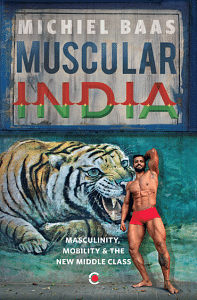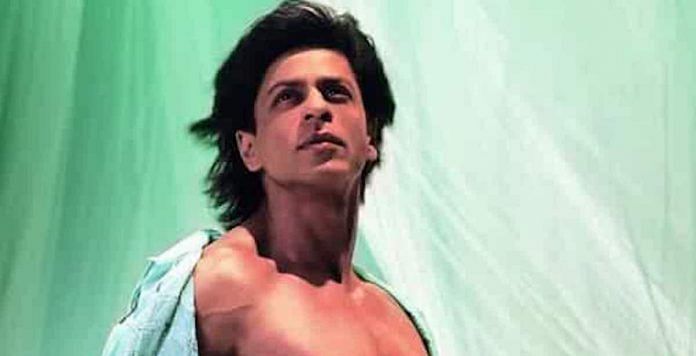It took three movies and a magazine to popularise a new bodily ideal among middle-class men in India, characterised by bulging biceps, rock-hard abs and visibly pronounced pecs. Radiating masculine strength and athleticism, this ideal diverges markedly from the healthy potbelly of yesteryear’s middle-class male—once the signifier of prosperity and well-being. This new ideal does not align easily with that of the pehlwan-wrestler whose body is the product of a diet rich in ghee, almonds and cow milk. Even if there is some tangible (or historical) connection in terms of workout routines, the end result is a radically different body. While this new lean and muscular body, with its emphasis on vascularity, comes closer to that of the working classes, within a middle-class context it now references discipline, professionalism and cosmopolitanism. While this trend has been taking shape for roughly two decades, it’s only in the last ten years or so that it has caused a veritable fitness boom across India.
For an older generation of fitness trainers and bodybuilders, Salman Khan’s hit-movie Pyaar Kiya to Darna Kya (1998) was the first intimation of what could be achieved with their bodies. However, this only translated into the real and very rapid growth in gym memberships and demand for personal training when Shah Rukh Khan revealed his freshly baked six-pack abs in Om Shanti Om (2007). The actor’s dramatic transformation was a hot topic of discussion in popular media that year. Yet, this was nothing compared to what would befall Aamir Khan after he starred in Ghajini (2008), the Hindi remake of a 2005 Tamil blockbuster, itself based on the American Memento (2000). Shot not long after he played an art teacher and ‘ordinary’ boy-next-door in Taare Zameen Par (2007), in Ghajini the actor sports a phenomenally muscular physique that immediately begged the question: how had he pulled it off?
In 2007, the Indian edition of Men’s Health was launched, further propelling the creed of the lean, muscular body. The magazine’s use of cover models who were not celebrities confirmed the potential of the Indian male body beyond Bollywood’s elite.
Also read: Exercising every single day is not good for you
What is this body about, though? Why has it so seized the imagination of middle-class men? And where have these legions of fitness and personal trainers emerged from? After a decade spent researching this phenomenon, I believe that the notion of transformation is key to understanding these developments. Bollywood actors constantly discuss the details of how they have sculpted their body to specifically suit a new movie project, making it part of promotional activities. In fact, this bodily transformation is often a separate storyline in itself, to be narrated alongside that of the movie in question. It draws attention to the lead actor’s body as something to go see and admire in addition to the movie’s actual storyline. Gyms too aggressively promote the potential for transformation, often imbuing it with notions that venture well beyond the idea of fitness per se. Men’s Health magazine even suggested that transforming one’s body wasn’t merely about health and fitness but also about being professional, cosmopolitan and ‘in control’ to withstand the caprices of rampant overconsumption.
Meanwhile, there is no denying that India itself is transforming. Cities are rapidly expanding, new places of leisure and consumption open their doors all the time, and quality of life—due to air pollution, population growth and the pressure on existing infrastructure—is diminishing. Central to these developments is the growth of the middle class itself. While it tends to be the middle class that cities cater to as they expand, remake and introduce new ways of consumption and leisure, it also presents them with new opportunities in terms of career pathways and generating an income.
This book builds upon an almost decade-long research engagement with lower-middle-class men for whose families the very idea of belonging to the Indian middle class is a relatively new situation. Employed as fitness (or personal) trainers and competing in bodybuilding and modelling competitions, these men’s muscular bodies appear to reflect the very promise of a new India. Through extensive physical transformation, their bodies have come to approximate the lean and muscular ideal that Bollywood has popularised.
Also read: Indians in their 20s are getting Botox to look like Indians in their 20s
The last decade or so has seen the rapid emergence of a fitness industry across India, attracting an ever-growing number of middle-class Indians struggling with issues of weight-gain and aspiring to achieve this new muscular ideal. Trainers and bodybuilders have become brokers in bodily knowledge and are held to have the key to physical transformation. As much as they are admired for their bodies, the socio-economic distance between the trainers—hailing from lower-middle-class vernacular (‘vernac’) backgrounds— and their clients remains significant. However, this ostensive class gap also presents an opportunity for social mobility.
Interacting with upper-middle-class clients helps trainers improve their English and acquire knowledge of the kind of lifestyles they aspire to. Their bodies function almost literally as currency in this; it buys them a way into something that would have otherwise kept its doors resolutely shut. At the same time, these relationships between trainers and clients continue to be revealing for the boundaries that separate different layers of the Indian middle class, pointing at the resilience of entrenched hierarchies. As much as change and limitless opportunities characterise the narrative of a new and rapidly changing India, upward socioeconomic mobility can be a pretty sluggish process as well.
 Excerpted with permission from Muscular India: Masculinity, Mobility and the New Middle Class by Michiel Baas, published by Westland Publications (Context imprint)
Excerpted with permission from Muscular India: Masculinity, Mobility and the New Middle Class by Michiel Baas, published by Westland Publications (Context imprint)




Middle class no longer will be able to afford body building or even movies for that matter. Exorbitant personal income taxation is the modus operandi of every government and giving out freebies to non-tax paying population in the form of subsidies to buy votes.